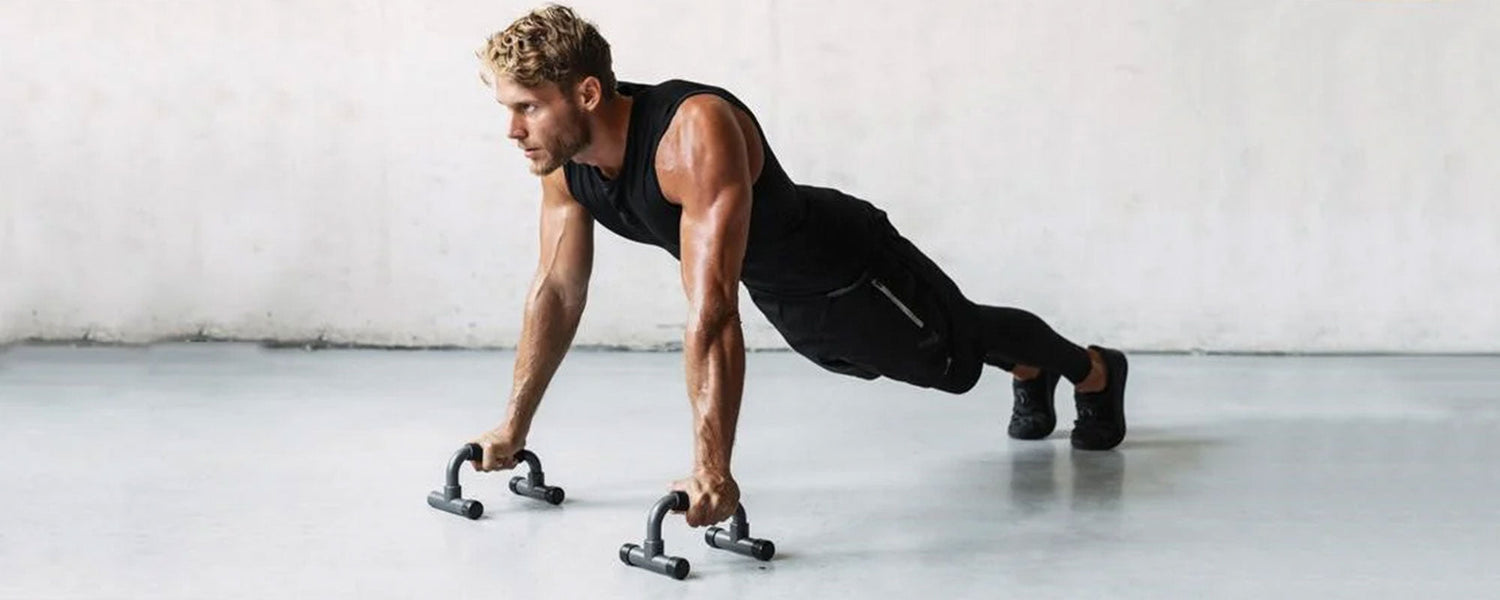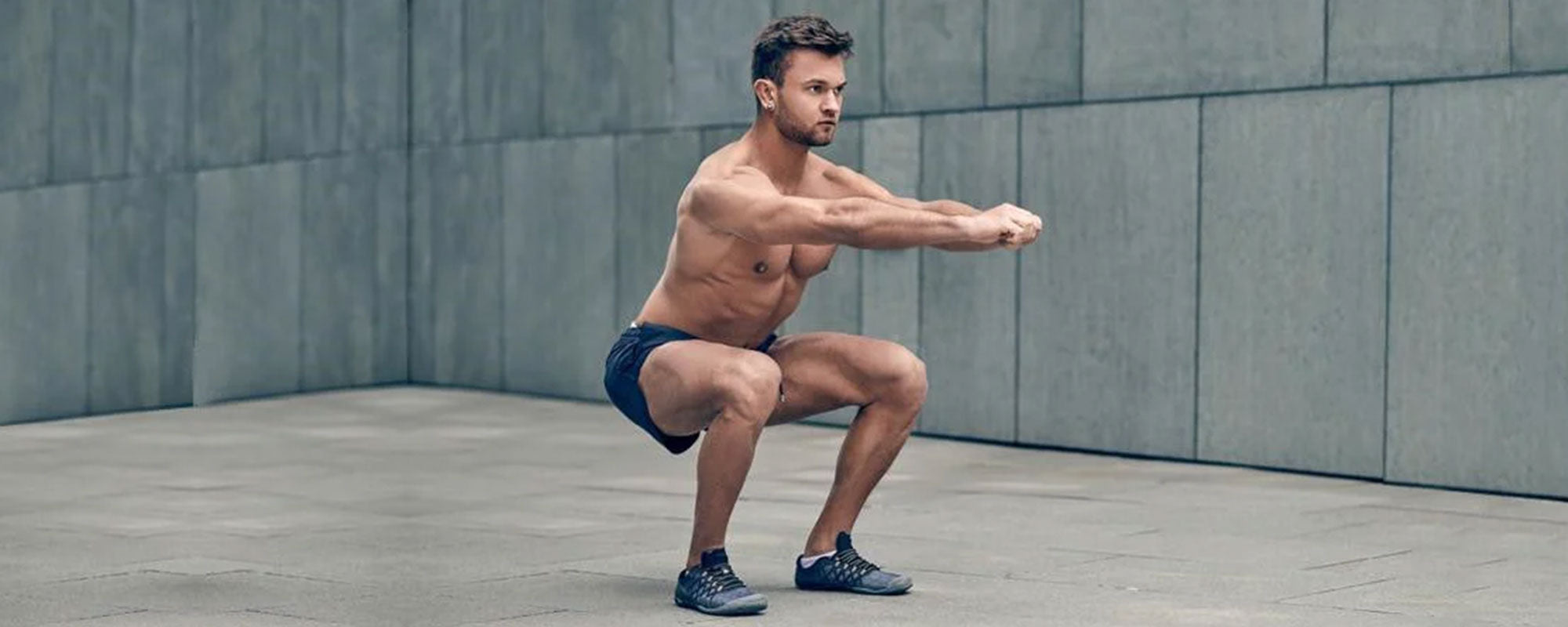Table of content
Push-ups are popular all around the world for building body strength and improving fitness. But many people suffer from trying to do too many push-ups when they are not ready yet.
Although push-ups seem simple, people often make mistakes while attempting them. Performing push-ups quickly require proper technique and training. This article will highlight some of the fastest ways you can learn to do push-ups.
1. What are Push-Ups?
A Push-up is a compound exercise that engages multiple joints and different muscle groups all at once. Most of the work is done on the upper body, including the chest, triceps, biceps, and muscles along the sides of the spine. Moreover, abdominal muscles help to maintain proper alignment when in the push-up position.
Apart from targeting muscles in the upper body, they also engage the ones in the legs and core.
Since push-ups involve all major muscle groups, they are excellent for building strength in the entire body. They can be modified for all levels of fitness depending on your preferred level of difficulty.
2. Why are Push-Ups Important?
Push-ups are great for keeping the body fit and healthy. They are among the few exercises that actively work nearly every major muscle group in the body. Hence, they provide multiple health benefits when practiced regularly over time.
There are many variations of the push-up, each of which can result in the following benefits:
- Improved muscle mass and cardiovascular health
- Enhance muscle strength and tone
- Increased support in the joints
- Burn calories
- Increase core strength and improve posture
- Increases flexibility and bone density
3. Fastest Way to Do More Push-Ups
3.1. Understand Real Strength
- Performing push-ups can significantly build strength in the upper body. But these movements require you to support your entire body weight, which can be difficult.
- Whenever we talk about strength, we often relate it to lifting heavyweights. But there is more to strength than that. “Strength actually depends on our body movement, i.e. how easily we can move our body, rather than how much weight our body can lift.”
- Improving your body's movements is one of the best ways to increase strength and Push-ups help in building strength by working on our body movements as they engage nearly all major muscle groups.
- Once you have relative body strength, you have better control of your body and are able to do activities at a faster pace, whether they be push-ups, squats, or pull-ups.
3.2. Know Your Needs
You must know what you need to improve if you wish to do more push-ups. Do you need to build more endurance, strength, or both? You can figure this out by taking an assessment test.
3.2.1. One Minute Assessment
- Set your timer for 1 minute.
- Start doing push-ups until the timer stops.
- Record how many reps you have performed.
- Rules for Assessment:
- To complete a rep, you must lower your chest at least 2 inches above the ground and pause.
- Make sure to lock your elbows in place.
- Make sure your body forms a straight line from head to toe.
- You can rest if you want, without stopping the clock.
- Test Results:
The following are tiers determining the recommended difficulty level based on how many sets of push-ups you can complete.
| Recommended Difficulty Level | |
|---|---|
| Below Average | 15 push-ups or less |
| Average | 20 push-ups |
| Good | 30 - 35 push-ups |
| Excellent | 40 - 45 push-ups |
How to Improve
If you find yourself doing fewer push-ups, there are a few workout plans that can help you improve your performance.
3.2.2. 1 Month Plan to Do More Push-Ups
- Do 10 sets of 8 reps with 2 minute rests in between sets twice a week.
- Then do 8 sets of 10 reps with a 1-minute rest twice a week.
- Next, do 6 sets of 15 reps with a 1-minute break twice a week.
- Finally do 4 sets of 20 reps with a 2-minute break twice a week.
At the end of the test, take at least 5 days off before retaking the test to see where you stand.
3.3. Break Down the Movement
An easier way to work towards doing push-ups is to break them down into the following two parts:
3.3.1. Eccentric Phase
This is the phase where the body is resisting gravity. Working on the eccentric portion is one of the easiest ways to build towards doing push-ups over time.
The eccentric contractions stimulate your muscle cells. Muscle is not only shortened but also lengthened under tension from a force greater than the muscles generate.
Hence, practicing this phase helps make your muscles stronger, which will enable you to do more push-ups.
To make the most of the eccentric phase, try to follow these steps.
Please make the following video illustration.
- Start in a plank position with your arms at 45-degree angles relative to your body and your hands placed underneath your shoulders.
- Lower your body and hips slowly for 5 seconds to the ground.
- Briefly pause at the bottom without your chest touching the ground.
- Then move up back to the original position.
- Do 10 reps of this eccentric movement, then do 10 normal push-ups with a 1-2 minute break in between.
3.3.2. Concentric Phase
It is the phase where the body is overcoming gravity. The concentric phase shortens the muscles as the tension produced by the muscles is greater than the load.
As we elevate our body above the ground, our chest and triceps produce more force than our body weight, so they work concentrically.
To make the most of the eccentric phase, try to follow these steps.
- To begin, lie on your stomach on the floor.
- Keep your arms directly under the shoulders but slightly wider than the shoulder width.
- Align your body from head to toe to maintain a neutral body position.
- Now slowly lift up your body by pushing your hands against the floor.
- Contract the chest muscles while moving up and make sure to exhale.
- Pause for a moment at the top and then return to the original position.
- Working on both phases separately can help you do more push-ups in a limited period of time.
3.4. Adopt Accurate Push-Up Form
Before you can get into completing multiple reps, practice forming the correct push-up position so you can hold it for longer durations.
3.4.1. Steps for Good Push-up Form
- Start in a plank position on your hands and knees. Place your hands apart, slightly wider than your shoulders.
- Lift your knees off the floor, extend your legs back by tucking your toes under. Make sure to keep your body in a straight line from head to toe without sagging in the middle.
- Engage your core by drawing your belly button in towards the spine.
- Inhale and start bending your elbows. Lower your body until your elbows reach a 90–degree angle.
- Then exhale and move up by contracting your chest muscles. Press your hands against the floor while returning to the original position.
- Make sure to not lock your elbows. Instead, keep your elbows slightly bent to engage your triceps and biceps.
3.4.2. Work on strengthening your Chest, Shoulders, and Triceps
The primary mover in a push-up is the chest. While the front deltoids in the triceps and shoulders assist with synergistic movement. The deltoid enables you to raise your arm up for shoulder flexion while lifting your chest up. “The stronger the muscles are, the faster you can activate them. The longer these muscles can endure tension, the more push-ups you can do in a row.”
- To maximize your strength, try doing workouts with weights and strength-oriented goals involving between 2-6 reps per set.
The primary mover in a push-up is the chest. While the front deltoids in the triceps and shoulders assist with synergistic movement. The deltoid enables you to raise your arm up for shoulder flexion while lifting your chest up. “The stronger the muscles are, the faster you can activate them. The longer these muscles can endure tension, the more push-ups you can do in a row.”
- To maximize your strength, try doing workouts with weights and strength-oriented goals involving between 2-6 reps per set.
3.5. Set Your Routine
Coming up with a routine that you can stick with is the only way you will begin to see results over time. Try to figure out times in your daily or weekly schedule that you can focus on doing your workout plan.
3.5.1. Figure out your routine
First, decide whether you want to perform push-ups daily or weekly (2-3 times a week). However, it is recommended that you do push-ups every other day to improve your stamina efficiently.
- Start by incorporating 3 sets of 10 push-ups with a 30 second rest period into your basic workout.
- Then add 2-3 reps to your sets every week.
3.5.2. Find your Baseline Repetitions (reps)
The number of baseline reps can vary from person to person depending on their body strength. The best way to find your baseline reps, i.e. the number of times you can repeat your push-ups in a set, is to attempt the following:
- Do the maximum number of push-ups you can in 2 minutes.
- Divide that number of push-ups by
- The result will be your baseline reps count.
- Every workout will contain almost 3 sets of this no. of reps.
3.6. Increase Workload Gradually
Performing the same types of exercises every day can result in a fitness plateau. Not changing the intensity of your workout will result in your muscles no longer developing.
If your exercises become less challenging over time, you will begin to lose interest. To avoid this, try to gradually increase the number of push-ups in your routine.
- Perform the same push-up routine you did to find your baseline and incorporate at least one extra push-up for each set every day.
- If you are unable to increase the number of push-ups for every set, stick to the same number for 3-4 sessions. Then try increasing it again after 5-6
- Track your results over time. You will notice more push-ups are being performed in less time in the following weeks.
3.7. Add Variety to Push-Up Types
After getting used to your basic push-up workout routine, try adding a variety of push-up types to work additional muscles. For instance, do standard, narrow, and wide push-ups for the first, second, and third set respectively.
- Benefits:
- Provides a comprehensive workout of push-ups working different muscle groups.
- Fewer overall push-ups being done with variations helps you to establish a new baseline to start with.
- Helps you do more sets of push-ups over time.
3.8. Do Push-ups as Fast as Possible
Increasing push-up speed is another method to raise the number of push-ups done in a certain amount of time. The best way to go about this is to time how many push-ups you can do in a row without stopping.
For example, your goal may be to do 50 push-ups. So you start doing them as fast as possible. It does not matter if you can perform them in a row for now.
Then in your next session, try doing the same number of push-ups but in less time.
Over time, you will notice that you are able to do more push-ups in a shorter period of time than before.
3.9. Track Your Progress
Keeping track of your progress is essential to measure how much you have improved. You can track the progress by increasing the numberof reps for push-ups in every session.
Tracking your progress will help ensure you are doing more push-ups with each passing day, increasing the intensity of the workout to challenge you further.
- The best way is to do one push-up session with a certain amount of reps as a goal.
- Then follow the same amount of reps in the second session, but in a shorter time period.
- Complete the next 2 sessions with higher reps as a goal.
It is generally recommended you raise the rep goal by 10 times every session so that the volume of push-ups increases consistently.
3.10. Avoid Common Mistakes
Taking care of these mistakes can effectively enhance the number of push-ups done in a specific time period.
- Keep your arms in the correct position: Don’t place your arms too far apart as it can strain your shoulders, preventing you from properly working other muscles, e.g. abs and core. The correct position involves placing your hands directly below your shoulders.
- Keep your back straight: Make sure your back is not bent or your hips hanging high in the air. Wrong back posture can make you susceptible to injuries.
- Ensure full movement: It is important to utilize a full range of movement if you wish to reap the benefits of push-ups. Make sure to extend your arms into a straight position and keep your forearms parallel to the floor.
- Don’t hold your breath: Make sure to properly inhale and exhale on the way down and up respectively. It is important to supply oxygen to muscles being exerted so that they can sustain the movement properly.
- Keep your head in proper alignment: As you go through the movement, make sure to not tuck your chin into your chest. Look slightly in front of you instead of looking down. Best way to remember this is that when you are close to the floor, make sure your chin touches the ground first instead of your nose.
4. Takeaway
No doubt push-ups can be a bit tricky to perform. But using the steps covered above can increase the number of push-ups you can do sooner than you think.
Never forget that performing push-ups require body strength and strength does not necessarily mean lifting heavyweights. Therefore, do not be intimidated when you see others lifting heavy weights to train. Instead, focus on practicing your own routine and you will get the results.
Photo Credit: olive-hitomawashi













Leave a comment
This site is protected by hCaptcha and the hCaptcha Privacy Policy and Terms of Service apply.